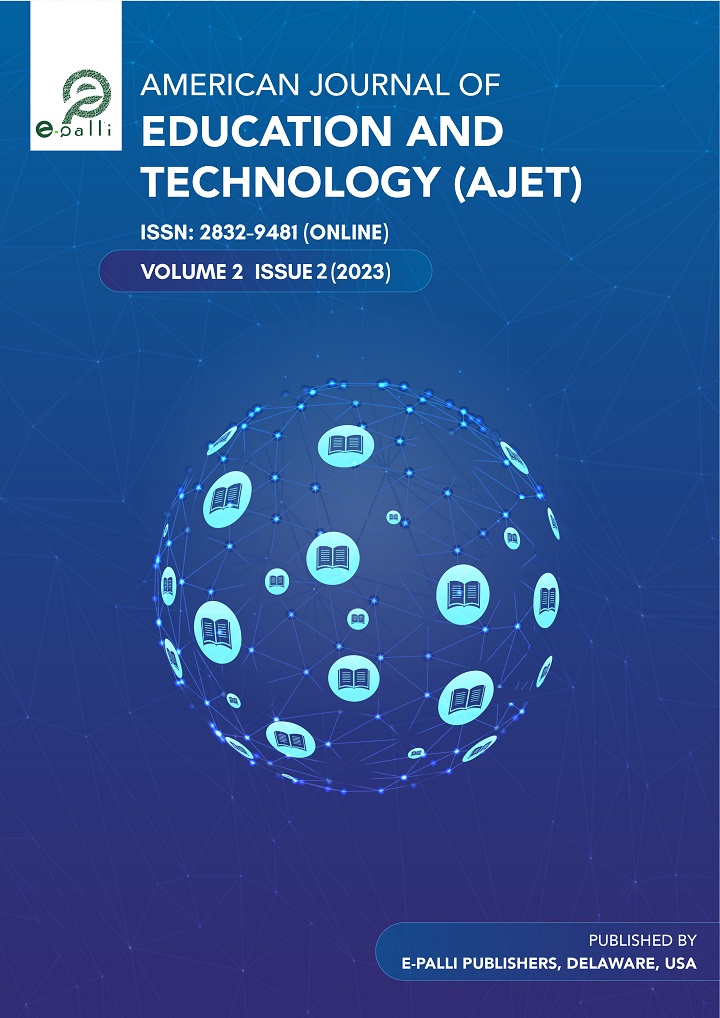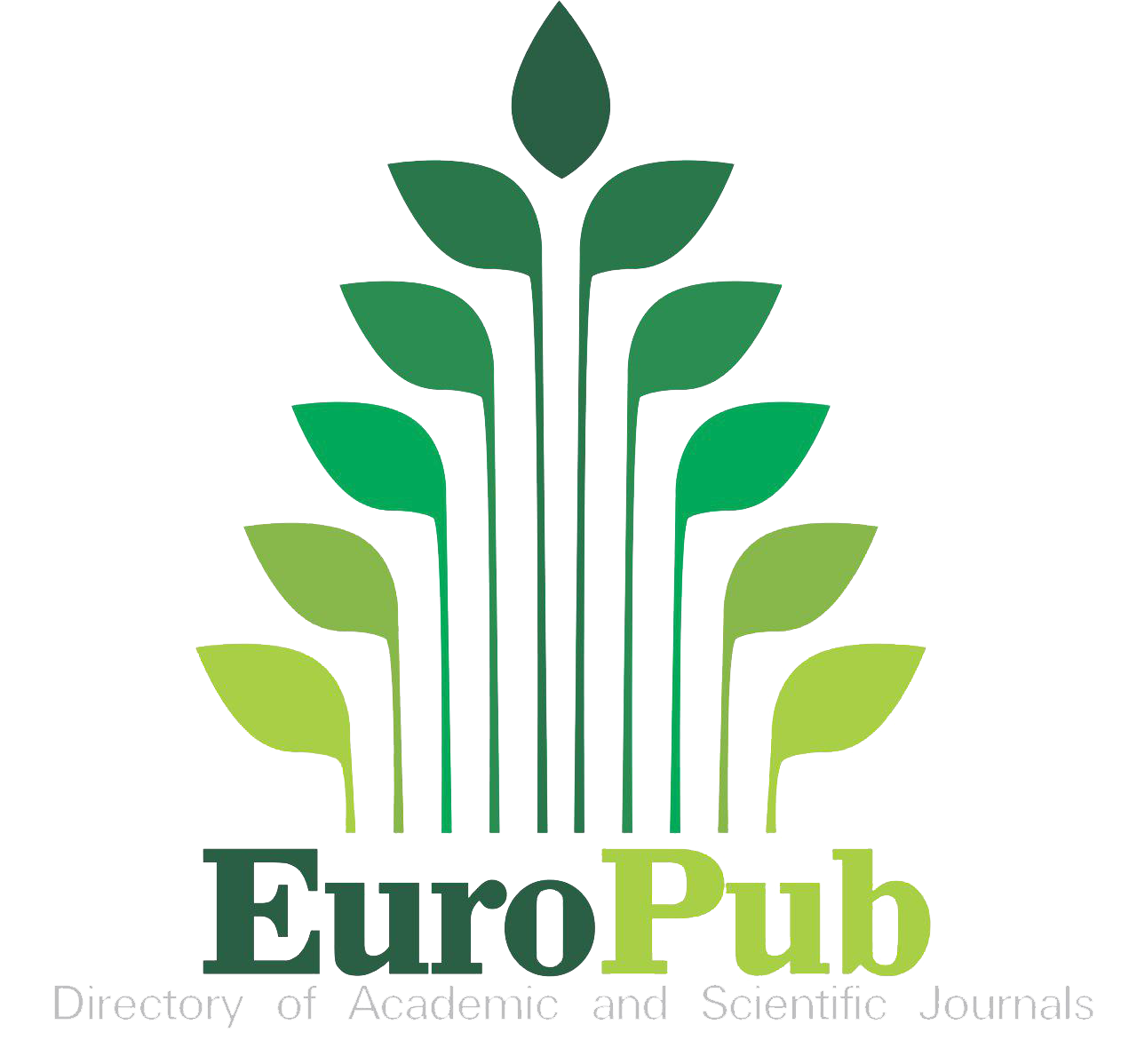The Qawaid Nahwu’s Learning Contribution to Reading Skills
DOI:
https://doi.org/10.54536/ajet.v2i2.1037Keywords:
Language, Arabic, Learning, Qawaid NahwuAbstract
This study aimed to determine and analyze the contribution of qawa’id nahwu learning in improving reading skills in Arabic language program students. This study uses a qualitative method with the data source selected by purposive sampling. The types of data in this study were primary data and secondary data. In contrast, the data collection techniques in this study used observation, interviews and subject interpretation of the questions posed by the researcher. The data analysis technique uses data reduction stages, data presentation, drawing conclusions, and verification. The results showed that the qawa’id nahwu method implemented for students proved to be more effective in improving reading abilities and skills in learning Arabic when compared to conventional methods. Other findings indicate that there are still inhibiting factors in implementing the qawa’id nahwu method, including environmental factors and internal factors from the individual students themselves. Therefore, efforts to overcome the obstacles of learning qawa’id nahwu can pay attention to five external factors: the competence of Arabic language lecturers, the learning methods used, the Arabic language material being taught, adequate infrastructure facilities, and a supportive environment.
Downloads
References
Abdullahi, A., Binti Mohmad Rouyan, N., & Salwa Mohd Noor, S. (2018). A Review on the Factors Affecting the Learning of Arabic Macro-Skills Among Malay Undergraduate Students. Humanities and Social Science Research, 1(1). https://doi.org/10.30560/hssr.v1n1p53
Ali, I., Cheva-Isarakul, J., & Kharas, M. (2016). A Question of Culture and Belonging: Identity and Integration in Denmark. Humanity in Action.
Aljunied, K. (2018). The Koran in English: A Biography. American Journal of Islam and Society, 35(3). https://doi.org/10.35632/ajis.v35i3.484
Alqudsi, A., Omar, N., & Shaker, K. (2014). Arabic machine translation: a survey. Artificial Intelligence Review, 42(4). https://doi.org/10.1007/s10462-012-9351-1
Alshammari, M., Duff, J., & Guilhermino, M. (2019). Barriers to nurse-patient communication in Saudi Arabia: An integrative review. In BMC Nursing, 18, (1). https://doi.org/10.1186/s12912-019-0385-4
Amine Menacer, M., & Smaïli, K. (2021). Investigating Data Sharing in Speech Recognition for an Under-Resourced Language: The Case of Algerian Dialect. https://doi.org/10.5121/csit.2021.110308
Astuty, E. (2015). Implementation Analysis of Lecturer’s Pedagogical Competence on Student’s Academic Achievement. Journal of Management Research, 7(2). https://doi.org/10.5296/jmr.v7i2.6834
Bakker, B. (2020). Learning arabic vocabulary: The effectiveness of teaching vocabulary and vocabulary learning strategies. Journal of Higher Education Theory and Practice, 20(10). https://doi.org/10.33423/jhetp.v20i10.3662
Baroroh Ma’arif, I., Kanzul Fikri, A., & Husna, A. (2020). Designing nahshorna bilingual media for nahwu-shorof basic learning. Journal of Research on English and Language Learning (J-REaLL), 1(1). https://doi.org/10.33474/j-reall.v1i1.5424
Calafato, R. (2020). Learning Arabic in Scandinavia: Motivation, metacognition, and autonomy. Lingua, 246. https://doi.org/10.1016/j.lingua.2020.102943
de Oliveira, Y. C. A., de Matos Celino, S. D., & Cavalcanti Costa, G. M. (2015). Comunicação como ferramenta essencial para assistência à saúde dos surdos. Physis, 25(1). https://doi.org/10.1590/S0103-73312015000100017
Undang-undang No 20 Tahun 2003 Tentang Sistem Pendidikan Nasional, (2004).
Gazzawi, S. (2000). The Arabic Language (Washington D.C: Center of Contemporary Arab Studies).
Houghton, S. A., & Al-Asswad, K. A. (2014). An exploration of the communication strategies used when culture-laden words are translated from Japanese to Arabic in ELF interaction. Linguistics and Education, 28. https://doi.org/10.1016/j.linged.2014.08.001
Kholisin. (2003). Cikal bakal kelahiran ilmu nahwu. Bahasa Dan Seni, 31(1).
Kong, J. H., Shin, S. H., Lee, H. J., & Kim, T. Y. (2020). Arabic language teachers’ perceptions of learners’ motivation in South Korean universities. Electronic Journal of Foreign Language Teaching, 17(1).
Marpuah, S., & Sulton. (2019). The mastery of Arabic language communication with communicative active method. Humanities and Social Sciences Reviews, 7(3). https://doi.org/10.18510/hssr.2019.7371
Motaghizadeh, E., Parvini, K., & Mousavi, S. R. (2018). Pathology of reading skill of students in the arabic language and literature (Case study: Undergraduate students). Language Related Research, 9(3).
Muhtarom, Yusuf. Suharsono, Suharsono. Syaefudin, Fahmi. (2020). Lahjah Arabiyah Lahjah Arabiyah. Lahjah Arabiyah, 1(2).
Prihartini, Y., Wahyudi, W., Aliasar, A., Mukhaiyar, M., & AOM, U. (2018). The Development of Arabic Learning Model by Using Multimedia of Computer at UIN STS Jambi. Al-Ta Lim Journal, 25(2). https://doi.org/10.15548/jt.v25i2.371
Rabiah, S. (2018). Language As a Tool for Communication and Cultural Reality Discloser. INA-Rxiv Paper, 3(1).
Rahman, A., & Melhim, A. (2014). The Status of Arabic in the United States of America post 9/11 and the Impact on Foreign Language Teaching Programs. Advances in Language and Literary Studies, 5(3). https://doi.org/10.7575/aiac.alls.v.5n.3p.70
Rita Mariyana. (2010). Pengelolaan Lingkungan Belajar. Kencana.
Ritonga, M., Widodo, H., Lahmi, A., Budiarti, M., Annova, F., & Zubaidah. (2021). Arabic Learning Orientation in Mahad and Islamic Boarding Schools, and its Relevance to the Need for Human Resources with Language Skills in the Globalization Era. International Journal of Early Childhood Special Education, 13(2). https://doi.org/10.9756/INT-JECSE/V13I2.211074
Sharifzadeh, M. S., & Abdollahzadeh, G. (2021). The impact of different education strategies on rice farmers’ knowledge, attitude and practice (KAP) about pesticide use. Journal of the Saudi Society of Agricultural Sciences, 20(5). https://doi.org/10.1016/j.jssas.2021.03.003
Shenassa, M. E., & Khalvandi, M. J. (2008). Evalaution of different English translations of Holy Koran in scope of verb process type. 2008 3rd International Conference on Information and Communication Technologies: From Theory to Applications, ICTTA. https://doi.org/10.1109/ICTTA.2008.4530013
Sirbu, A. (2015). The Significance of Language as a Tool of Communication. Naval Academy Scientific Bulletin, 18(2), 405–406. https://doi.org/10.21279/1454-864X
Suhaimi, S. (2020). AL-TA`RIF WA AL-TANKIR DALAM AL-QURAN (Analisis Terhadap Pemikiran Imam al-Suyuti). Jurnal Ilmiah Al-Mu’ashirah, 16(2). https://doi.org/10.22373/jim.v16i2.6562
Tsukada, K. (2011). The perception of Arabic and Japanese short and long vowels by native speakers of Arabic, Japanese, and Persian. The Journal of the Acoustical Society of America, 129(2). https://doi.org/10.1121/1.3531801
Yahaya, H., Sardi, J., Radzi, M., Abdelhamid, I. Y., & Islam, F. P. (2019). Factors that Hinder Speaking Arabic as a Third Language. International Journal of Academic Research in Business and Social Sciences, 9(7). https://doi.org/10.6007/ijarbss/v9-i7/6401
Zetawi, M. A., & Lipka, O. (2019). Note-taking skill among bilingual students at the academia: Literacy, language and cognitive examination. Frontiers in Psychology, 10(APR). https://doi.org/10.3389/fpsyg.2019.00870
Downloads
Published
How to Cite
Issue
Section
License
Copyright (c) 2023 Amir

This work is licensed under a Creative Commons Attribution 4.0 International License.







